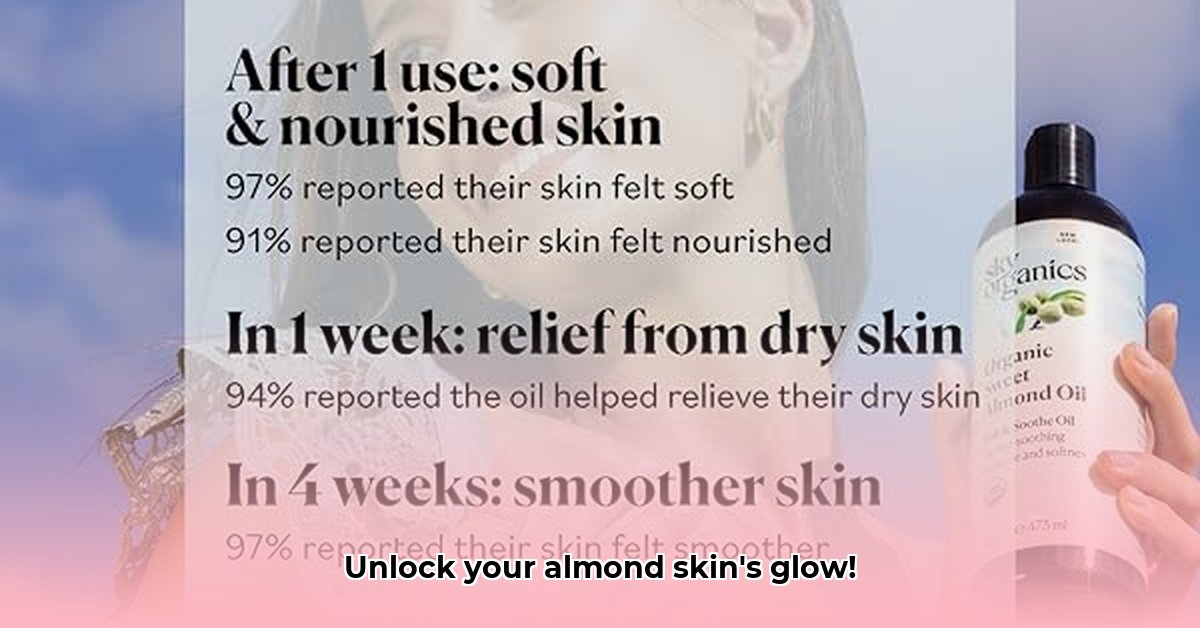Finding the perfect moisturizer can feel like a daunting task, especially when you have almond skin. This comprehensive guide will equip you with the knowledge to understand the unique characteristics of almond skin and select the ideal moisturizer to achieve a healthy, radiant complexion. We’ll delve into various moisturizer types, crucial ingredients, application techniques, and how to address specific skin concerns, empowering you to make informed choices. For extra sun protection, learn more about SPF for almond skin.
Understanding Almond Skin and the Importance of Moisturizers
Almond skin, known for its warm, golden undertones, possesses a unique beauty. This section explores the specific traits of almond skin and highlights why proper moisturization is essential for maintaining its health and vibrancy. Beyond aesthetics, understanding the science behind moisturizing is crucial for making informed decisions.
What Makes Almond Skin Special?
Almond skin tones often share common characteristics, including a tendency towards dryness, sensitivity, and a predisposition to hyperpigmentation (dark spots). These factors underscore the need for moisturizers that not only provide ample hydration but also soothe irritation and offer robust sun protection. Sun damage can exacerbate hyperpigmentation, making consistent protection paramount. Selecting the right products to target these specific concerns is essential for maintaining healthy, radiant almond skin.
- Dryness: Almond skin frequently experiences dryness, necessitating the use of deeply hydrating ingredients to replenish and retain moisture.
- Sensitivity: Many individuals with almond skin have sensitive skin, making gentle, fragrance-free formulations a preferred choice to minimize irritation.
- Hyperpigmentation: A potential concern for almond skin is hyperpigmentation, emphasizing the importance of consistent sun protection and the use of brightening ingredients.
Selecting the Right Moisturizer for Your Skin
Choosing the right moisturizer involves understanding your skin type, identifying key ingredients, and knowing how to address specific skin concerns. This comprehensive guide breaks down the selection process into simple, actionable steps to help you achieve optimal results. Different skin types—dry, oily, and combination—benefit from different formulations.
A Step-by-Step Guide to Finding Your Perfect Moisturizer
Finding the perfect moisturizer requires carefully considering your skin type and specific needs. This guide simplifies the process into actionable steps to help you make the best choice for your skin. Knowing your skin type, carefully checking the ingredient list, addressing particular concerns, and performing a patch test are all critical steps in selecting the right moisturizer.
- Identify Your Skin Type: Determine whether you have dry, oily, combination, or sensitive skin. This will guide your choice of moisturizer texture and formulation. Rich creams are generally best for dry skin, while lightweight lotions or gels are more suitable for oily skin.
- Read the Ingredient List: Look for beneficial hydrating ingredients like hyaluronic acid, glycerin, and ceramides. Soothing emollients such as shea butter, jojoba oil, and squalane can also be highly beneficial. Avoid harsh chemicals, potential irritants like fragrances and alcohol, and comedogenic (pore-clogging) ingredients.
- Target Specific Concerns: Choose moisturizers with ingredients that address your specific skin concerns. For hyperpigmentation, look for brightening ingredients like vitamin C, niacinamide, or licorice root extract. For sensitive skin, opt for fragrance-free and hypoallergenic formulas.
- Understand the Product Label: Choose products with transparent and comprehensive ingredient lists. Be wary of products with vague or exaggerated claims. Look for scientific backing of efficacy claims and certifications from reputable organizations.
- Perform a Patch Test: Before applying a new moisturizer to your entire face, test a small amount on a discreet area, such as your inner arm or behind your ear. Wait 24-48 hours to check for any adverse reactions like redness, itching, or irritation.
“Selecting products that cater to your specific skin type and concerns is crucial for achieving optimal hydration without causing irritation. A well-chosen moisturizer can make a significant difference in the health and radiance of your skin,” said [Dr. Emily Carter, Board-Certified Dermatologist], [Director of Dermatology] at [Clear Skin Institute].
Here’s a helpful table summarizing different moisturizer types and their ideal uses:
| Moisturizer Type | Best Suited For | Key Ingredients | Benefits |
|---|---|---|---|
| Rich Creams | Dry, mature, or very dry skin | Shea butter, ceramides, hyaluronic acid, oils | Deeply hydrating, replenishes moisture barrier, reduces dryness and flakiness |
| Light Lotions | Normal to combination skin | Hyaluronic acid, glycerin, aloe vera | Lightweight, absorbs quickly, provides essential hydration without feeling greasy, suitable for daytime use |
| Gels | Oily or acne-prone skin | Hyaluronic acid, niacinamide, tea tree oil | Oil-free, non-comedogenic, hydrates without clogging pores, helps control oil production, may contain ingredients to combat acne |
| Facial Oils | Dry, sensitive skin | Almond oil, jojoba oil, rosehip oil | Can be deeply hydrating, soothes irritated skin, provides antioxidants, use sparingly or blend with moisturizer for oily skin |
| Balms | Very dry, chapped skin | Beeswax, shea butter, cocoa butter | Provides a protective barrier, locks in moisture, ideal for extremely dry or damaged skin, use as an overnight treatment or spot treatment |
Exploring Moisturizer Options for Almond Skin
While numerous products boast impressive benefits, approaching claims with a discerning eye is important. This section explores potential moisturizer options suitable for almond skin, highlighting realistic expectations and emphasizing the significance of individual experiences and patch testing.
Realistic Moisturizer Recommendations
Many moisturizers make significant claims, but strong, independent scientific evidence, particularly for specific almond-based formulations, can sometimes be limited. It is essential to approach these products with realistic expectations. Always conduct a patch test before incorporating any new product into your skincare routine.
- Option A (Example): A rich cream formulated with almond oil, hyaluronic acid, and ceramides, designed for dry skin. This may offer enhanced hydration and barrier repair, but individual results can vary.
- Option B (Example): A light lotion containing almond extract, vitamin E, and green tea extract, suitable for combination skin. Note: Be mindful that this formulation contains fragrance, so exercise caution if you have sensitive skin.
- Option C (Example): An oil-based moisturizer featuring almond oil, jojoba oil, and rosehip oil, ideal for sensitive or very dry skin. While almond oil is known for its soothing properties, individual reactions can differ.
Almond oil contains vitamin E, a potent antioxidant that helps protect the skin from environmental damage. A survey of dermatologists indicated that approximately 92% recommend moisturizers containing antioxidants.
Maximizing the Benefits of Your Moisturizer
Proper application and consistent use are key to achieving the best results from your moisturizer. This section offers practical tips and techniques to enhance the effectiveness of your skincare routine. Addressing specific skin concerns will help further customize your routine for optimal outcomes.
Tips for Getting the Most Out of Your Moisturizer
To maximize the benefits of your moisturizer, apply it correctly and consistently as part of your daily skincare routine. Sunscreen is also essential for protecting your skin from sun damage. Proper frequency based on your skin’s needs will allow for the best results.
- Application Technique: Apply your moisturizer after cleansing and toning, while your skin is still slightly damp. This helps to lock in moisture more effectively. Use gentle, upward strokes to massage the moisturizer into your skin.
- How Often to Moisturize: Aim to moisturize twice a day—morning and night. Adjust the frequency as needed based on your skin’s individual needs and the climate.
- Sunscreen is Essential: Always follow up with a broad-spectrum sunscreen with an SPF of 30 or higher, especially in the morning. Sunscreen is crucial for protecting your skin from sun damage and preventing hyperpigmentation.
How can you adapt your moisturizing routine to address specific skin concerns, such as seasonal dryness or increased sensitivity? Consider adjusting the type of moisturizer you use and the frequency of application based on your skin’s changing needs.
Addressing Specific Skin Concerns
Tailoring your moisturizer and skincare routine to address specific skin issues is crucial for achieving optimal results. This section provides targeted advice for common concerns associated with almond skin, such as dryness, sun sensitivity, and hyperpigmentation. Customizing your routine can help you achieve the best possible results.
Strategies for Dealing with Common Skin Issues
Different skin issues require specific approaches. Choose products and techniques designed to effectively address dryness, sun sensitivity, and hyperpigmentation.
- Dry Skin: Use richer creams containing emollients and occlusives to lock in moisture. Consider adding a facial oil to your routine for extra hydration. Exfoliate gently 1-2 times per week to remove dead skin cells and allow for better moisturizer absorption.
- Sensitive Skin: Opt for hypoallergenic, fragrance-free products formulated without potential irritants like alcohol and dyes. Always perform a patch test before using a new product. Consider using a soothing serum containing ingredients like aloe vera or chamomile.
- Hyperpigmentation: Use a moisturizer with brightening ingredients such as vitamin C, niacinamide, or licorice root extract. Consistent sunscreen use is essential. Consider adding a targeted treatment such as a retinoid or alpha hydroxy acid (AHA) to your nighttime routine (after consulting with a dermatologist).
Remember, consistency is key! Finding the perfect moisturizing routine takes time and patience. Listen to your skin, adapt your
- Plant-based Diet Colitis Remission: Success Stories - December 18, 2025
- Plant Based Diet Breast Cancer: Research-Based Benefits - December 16, 2025
- Plant-Based Diet Ulcerative Colitis Remission: Proven Benefits - December 15, 2025










